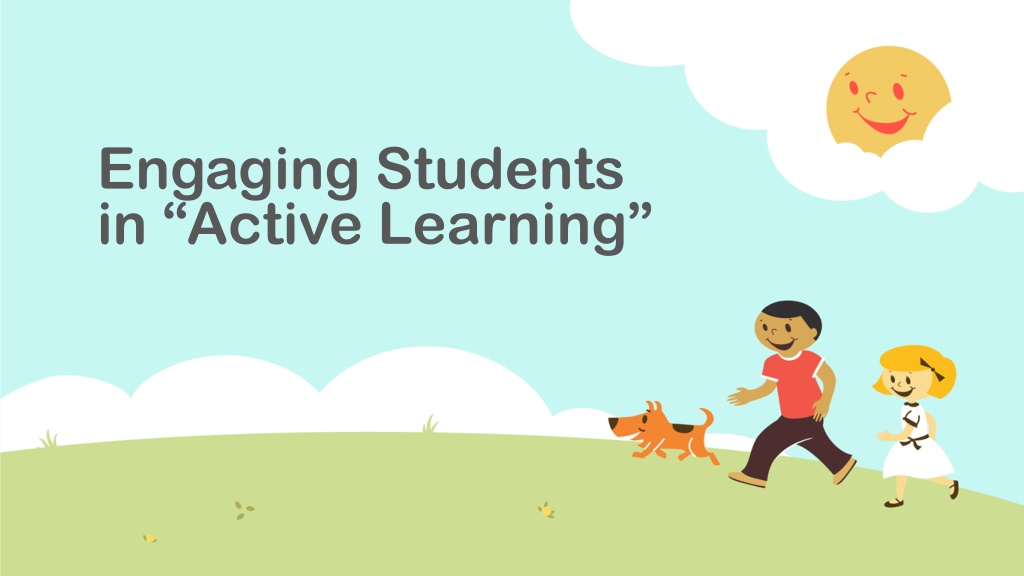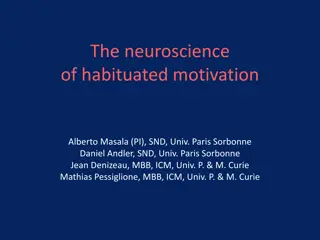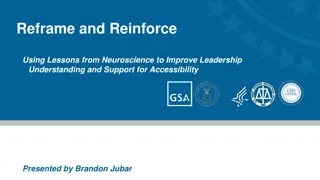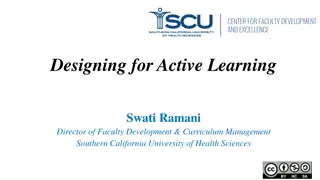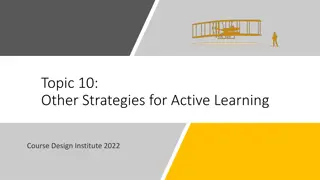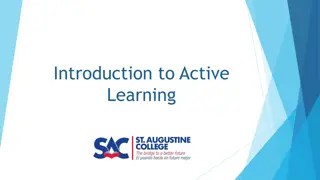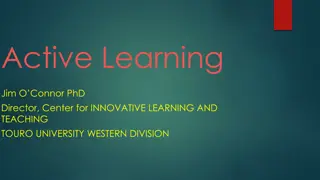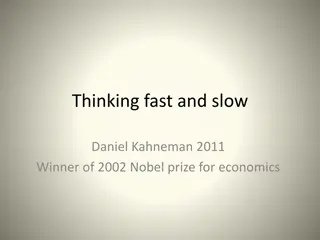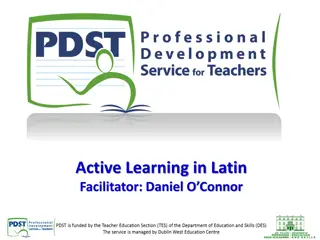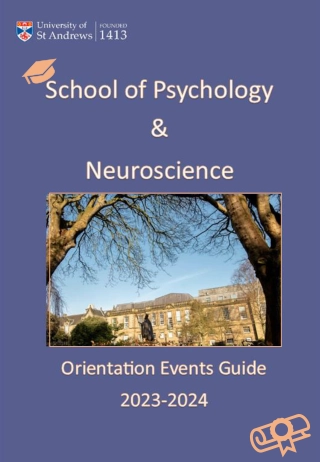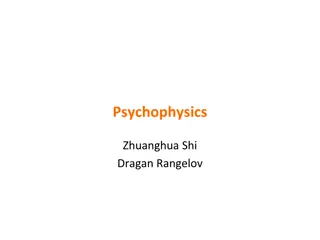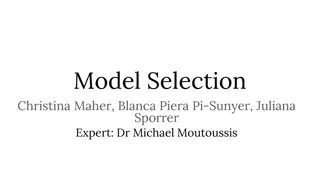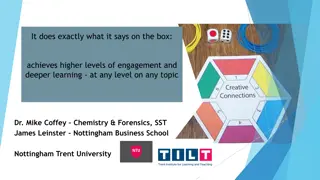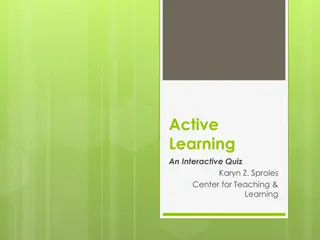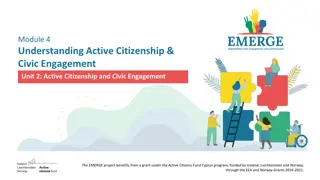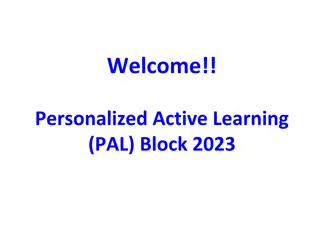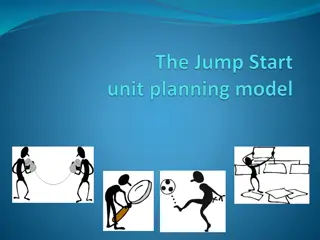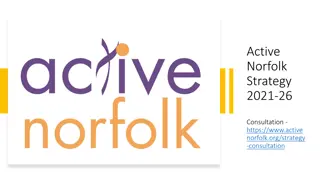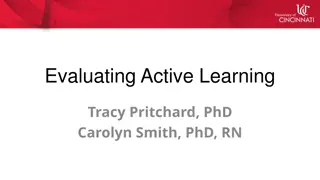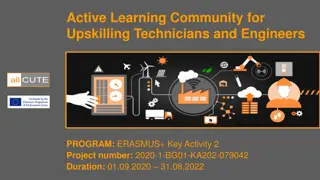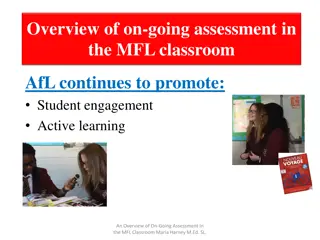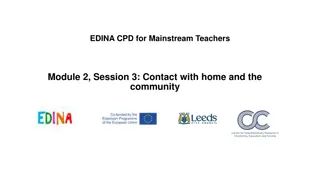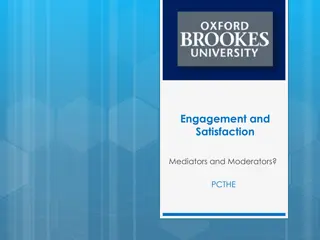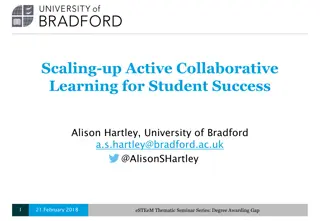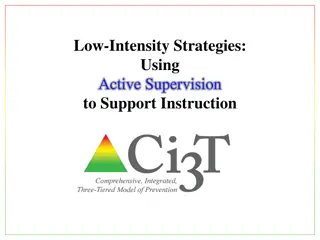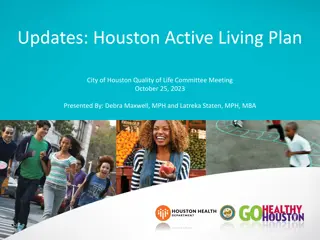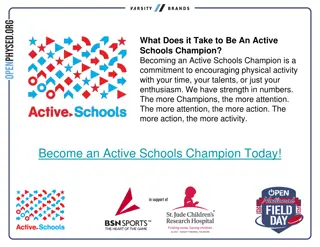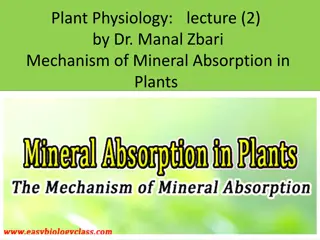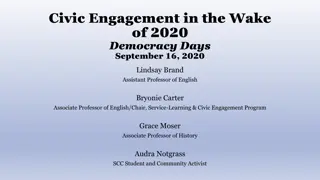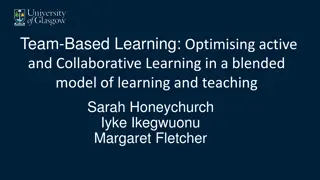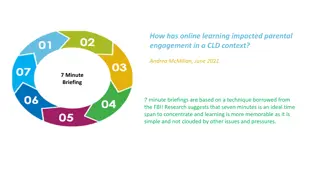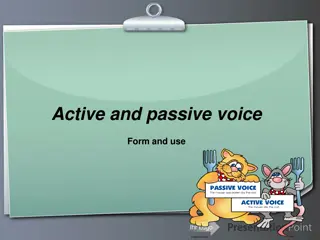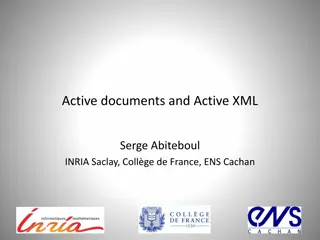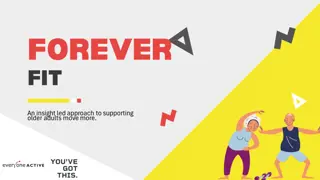Enhancing Learning Through Neuroscience and Active Engagement
Explore the intersection of neuroscience and active learning to understand how neurons are activated when exposed to stimuli. Discover the importance of creating disequilibrium for new learning and how adults modify existing networks through experience. Dive into memory models and the role they play in the ease or difficulty of learning concepts.
Download Presentation

Please find below an Image/Link to download the presentation.
The content on the website is provided AS IS for your information and personal use only. It may not be sold, licensed, or shared on other websites without obtaining consent from the author. Download presentation by click this link. If you encounter any issues during the download, it is possible that the publisher has removed the file from their server.
E N D
Presentation Transcript
Engaging Students in Active Learning
Imagine this Once upon a time, two people were sitting in the Quad
Neuroscience & Learning When exposed to any stimulus, neurons are activated.
http://video.nationalgeographic.com /video/ng-live/mapping-brain- lecture-nglive?source=relatedvideo (3:50-9:17) http://ngm.nationalgeographic.com/ 2014/02/brain/voyage-video
Principles Every activation has its own pattern. Think of it as a web (spider web). Web after web is activated in our brain; some of them are laid down (stored) in our brain; others are not. Some become permanent immediately and effortlessly; others Some become permanent immediately and effortlessly; others decay and are lost. What makes for immediate permanence? decay and are lost. What makes for immediate permanence?
When adults learn, they build on or modify networks that have been created through previous experience or learning. (Barkley, E.F., p. 18).
Lets Review Piaget Let s Review Piaget Key Concepts: Schemes Assimilation Accommodation Disequilibrium [ When adults learn, they build on or modify networks that have been created through previous experience or learning. (p. 18).]
So there is NO new learning without disequilibrium. How does disequilibrium occur? Can we (as teachers) make that happen? (Do we really want our students to actually struggle?) Let s review
What makes the difference in ease/difficulty of learning? Some images, ideas, concepts, experiences are Immediately and Effortlessly stored permanently! Surprise; emotional load, etc.
What makes the difference in ease/difficulty of learning? Effortful : A general principle: The longer we hold a concept in working memory, the more likely it is to be moved to permanent storage. But we have a problem: Attention Span
Cognitive Strategies Levels of processing: The information makes sense is meaningful. Elaboration of existing schema: Fits in with what one already knows about how the world works (re- conceptualization)
Key Concepts Key Concepts Connection Connection Meaning Meaning Usefulness Usefulness Novelty Novelty Elaborative Elaborative
For your leisure reading & viewing For your leisure reading & viewing Iran-Nejad, Asghar (1980) . The schema : A structural or a functional pattern. Center for the Study of Reading Technical Report ; No. 159. Champaign, Ill. : University of Illinois at Urbana-Champaign, Center for the Study of Reading. The New Science of the Brain, National Geographic, February, 2014.
